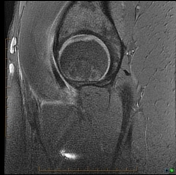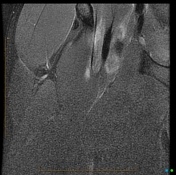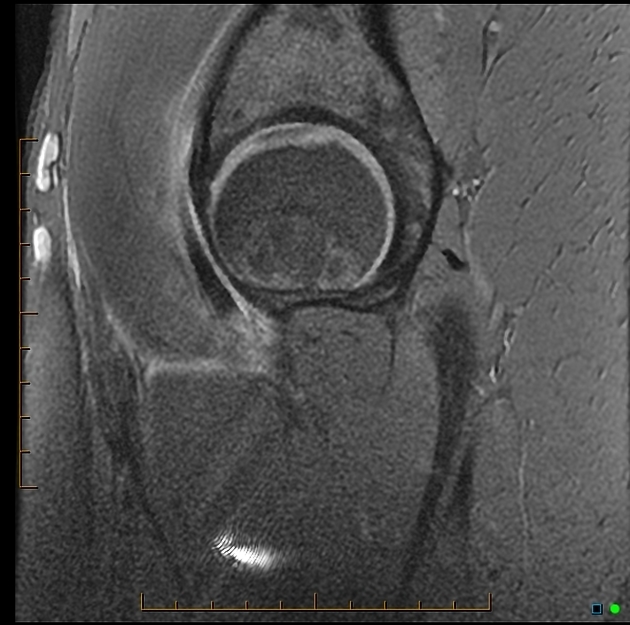Presentation
Sharp anterior right hip (groin) pain, especially with flexion. A "snapping" in the groin during hip flexion
Patient Data







Lateral (iliacus) and larger medial (psoas) components of the ilio-psoas tendon cross the hip joint (anterior acetabulum) as separate structures prior to joining just proximal to the lesser trochanter insertion. Edema in the muscle surrounding both of these tendons corresponding to the site of the patient's pain indicative of tendinopathy and adjacent muscle inflammation.
Case Discussion
The presence of separate medial and lateral tendons of iliopsoas is said to be a cause of "snapping" tendons whereby the medial (psoas) and lateral (iliacus) components cross over and impinge on the iliopectineal eminence during hip flexion and extension, causing the sensation of a snap. Note how this causes irritation not so much to the tendons themselves that are minimally swollen in this case but mostly to the adjacent muscle fibers.




 Unable to process the form. Check for errors and try again.
Unable to process the form. Check for errors and try again.